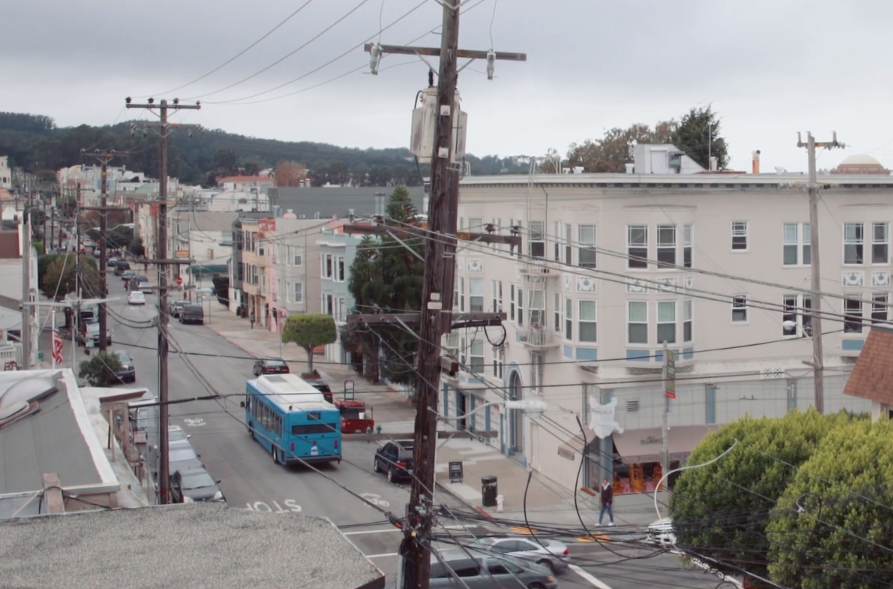Under the Bus

It is not wholly coincidental or unexpected that the same week it was declared that Uber-affiliated “black and luxury cars” outnumbered medallion cabs in New York City, a venture capital-backed private bus service began operating in San Francisco that directly competes with public transit for “regular commuters who are doing a predictable route every day.”
The niceties of the six-dollar-per-ride Leap bus — “finished [reclaimed!] wooden planks adorning the back wall”; “soft mood lighting”; local “Happy Moose Juice,” whatever the fuck that is; Blue Bottle coffee; Wi-Fi and USB ports; and bar stools — are only just beside the point, which is that its handful of buses complete a circuit “from the Financial District and the edge of Soma to the Marina” and run during “morning and evening rush hours.” This, Leap CEO Kyle Kirchhoff told Nitasha Tiku, complements San Francisco’s existing public transit system, Muni, by “handling some of the overflow.” In fact, he told her, Leap wants to be “the best way to interface with mass transit” and “help mass transit infrastructure expand.”
These are slightly curious clusters of words! One might ask, for instance, how does shoveling the money of more affluent passengers, who can afford to pay up to six dollars per bus ride — and seven dollars per Moose Juice — into an alternate, semi-private, semi-mass transit system that directly competes against public mass transit help the latter expand? Even when the Leap buses inevitably grow beyond their current circuit — probably mostly to other areas where “there’s a high concentration of people who work downtown and a high concentration of smartphone users,” as Kirchoff told Tiku — taken to the logical conclusion, where anyone who can afford the Leap buses takes them instead of Muni, the proportion of public mass transit riders composed of the city’s neediest residents — the poor, the handicapped, and the elderly, who frequently pay less than Muni’s current fare price of $2.25 — would grow dramatically, leaving the system ever more overburdened and reliant on tax dollars, rather than fares. (These people do not even enter into Kirschoff’s point of view; he positions Leap as a “low-to-mid tier” option in public transit. If Leap is a low option, what’s below that?) Less drastically, if one of the primary appeals of Leap — as a “friendly commuter next to me in a Burberry scarf and khaki trench” who “usually takes the same bus line that this Leap route mirrors” told Lauren Smiley — is that it has “shorter lines [and] cleaner buses” that Muni is apparently not providing, it is unclear how Leap’s siphoning of money directly out of the city transit system is the “best way to interface with mass transit” or will allow Muni to improve its services.
Wholly relieving the more affluent of the woes of public mass transit by shuttling them in luxury bus lines and in the vehicles of app-employed humans is not inconsequential for its long-term future: It removes any direct incentive for the affluent to apply political pressure for improved transit, and the research is startingly clear that the affluent have a great deal more influence in governance than ordinary citizens or even popular interest groups — especially in times and places of heightened inequality, like San Francisco in 2015. This is perhaps the most magical side effect of the new category of services made possible by the convergence of a new kind of logistics, a chronically underemployed labor force, and apps: It allows society’s most influential class to remove themselves from civic discussions at will.
